"The birds are still in flight. Believe the birds." —Jack Spicer
April has been (unsurprisingly) cruel to me. I’m starting to seriously feel the burnout of the school year, I’m way behind on reading, and the only consistent writing I’ve done this month is on birds.
Even though I spend a lot of time thinking about and looking at birds, it wasn’t until this month that I decided to finally pursue a sort of field notes routine with my birding observations. I don’t exactly know where it comes from, but I’m completely enamored with birds, nests, the sky, air, flight — the wings of things feathered and unfeathered. Perhaps it’s because poetry was my first literary love, and birds are the original poets. Perhaps it’s because I’m an air sign, and I prefer to keep my head in the clouds (yes, I tend to be delusional). Or maybe it’s because I wish I had wings.
Looking at the birds, learning their colors, and listening to their calls is, for me, a practice akin to reading — which is to say, a practice akin to praying. It might not seem like much, but I’m proud of materializing that prayer here. If I can’t commit to a consistent dissertation writing practice, at least I can commit to the birds.
April 5
I saw (and heard) some red-winged blackbirds and one house finch on my walk today. I also heard song sparrows, but I couldn’t spot them with my eyes. And I saw a mourning dove fly across the bridge, over the marsh, which is full of reeds.
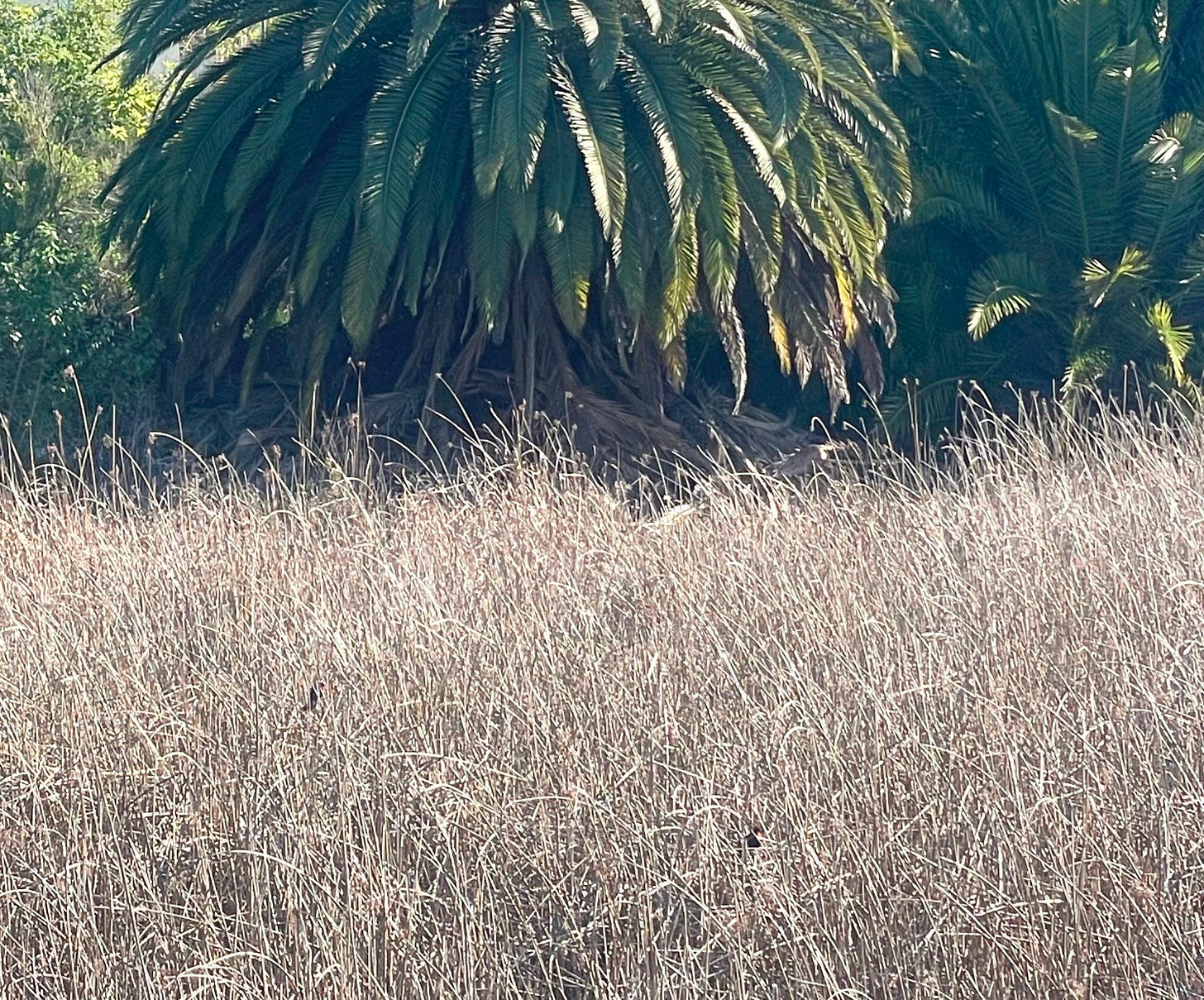
April 7
4:30 pm. Took a walk with R. Saw what I initially thought was a hawk, but then I thought it was too small to be a hawk, so I wasn’t sure. It was swooping around the back units of the neighborhood, and I think it caught some food (a small rodent or a worm), which it ate perched on a tree branch. It had a kind of whitish, grey body with darker grey coloring along the tail. I think I saw stripes near the tail, too. It had the face and shape of a hawk but smaller. I checked my pocket guide when I got home to see what it could have been. It looks like I might have seen a sharp-shinned hawk, but I’m not sure. What if it was a merlin? What color were its legs again? It’s getting blurrier by the minute in my memory.
Near the end of our walk, we watched a crow and a hawk play in the sky. Well, it was more like the crow playing with the hawk while the hawk, tolerating it, searches for food. We had a perfect view of their game. The crow, perfectly contrasted against the bright blue sky, flew in circles all around the hawk: above, below, from one side to the other. The crow flies high over the hawk, hovers for a beat at the top, then dives down through the air, shooting itself downward and almost colliding with the hawk. The crow swoops an extra inch or two below the hawk so as to barely graze the tip of its wing, but it still gets close enough to throw the hawk off for a moment. Meanwhile, the hawk steadily hovers in circles around the sky (cue Yeats) without yielding to the crow’s tricks — and it is quite the trickster. The crow is playful and even silly compared to the hawk, which seems so serious in contrast.
Sometimes I’m the hawk who wants to be left alone to hover solemnly and contemplatively over my surroundings. At the same time, watching the crow play around the hawk while the hawk took no interest made me oddly sympathize with the crow. I realize I’m anthropomorphizing the birds. But it’s hard to witness them playing like that and not think of it as potentially allegorical. Everything can exist in the symbolic realm for the artist. A silly crow plays with a stoic hawk — doesn’t that sound like a folktale waiting to be remembered?
April 8
peregrine falcons can fly downward through the air at 240 mph
a wrenlike rushbird can spend its entire life beside one half-acre pond
an albatross may fly 500 miles away from any other albatrosses
April 10
Jonathan Franzen on crying at the sight and sound of a great hornbill flying toward a tree: “It was the sheer gorgeous fact of the great hornbill, which couldn’t have cared less about me.”
April 12
7:02 pm. Met some friends for happy hour at a new restaurant on the pier. B’s friend from Florida is in town; she’s never seen the Pacific Ocean until this trip. B takes her down to the shore to feel the water (she can’t believe how cold we keep saying it is), but I stay back. I want to get a better look at the birds.
The restaurant sits at the base of the pier, between the ocean and the estuary that runs along the highway. Spring has sprung along the banks of the estuary. Great egrets perch in a tree where the river meets the ocean. I’m seeing the egrets from afar; the water running between us confines me to the parking lot. From this distance, the egrets look like bright white balloons that got stuck in the tree while floating up to the sky. I count sixteen of them in the tree. I turn away from the egrets and walk along the edge of the parking lot. I look up and see a black-crowned night-heron perched on a wire hanging over the estuary. I make out its squat football-esque shape perfectly against the gradient of a young sunset in the sky. I look back at the egrets. Suddenly the heron looks so much more alone.
“The beating of a heron’s wings breaks the calm in two. Then an egret’s.” —Cristina Rivera Garza, Grieving: Dispatches from a Wounded Country
April 13
3:50 pm. A dark-eyed junco visits the balcony. It’s perched on the sill where I scattered sesame seeds, and it seems to be peering into the living room.
April 15
9:45 am. I was on my way to class when I heard a bird call that I found slightly unusual, almost jarring, which is what got me to look up in the first place. That’s when I noticed it perched on the branch, defending its breakfast.
I saw it from the back, high up in a tree. I didn’t want to startle it, so I stayed behind. I stood there under the tree and observed. I started to notice something else next to it, gripped in its talons. It looked like a small rodent, a mouse maybe.
Suddenly another one swoops down onto the same branch, and they both start screeching. The second one flys up, around, and down again — this time landing directly on top of the first one that’s remained steady on the branch with its breakfast. The second one flys away.
I pull out my phone and open the Merlin Bird App to try and capture the bird call and thus ID the bird. I catch a set of squawks while I have the app open and find out it’s a Cooper’s hawk. I look down at the picture of the hawk on my phone and look up at the hawk in the tree. I move slowly to get a glimpse from the other side, so I can finally see it from the front.
I put my phone down and stare up at it for a while longer. I notice it noticing me, and I try to remain still. I notice a nest lodged between some branches higher up on the tree, and I wonder if the second bird and this one are mates. I make a mental note of where the tree is, so I can return to it again soon.
April 18
9:02 am. Saw an egret and a turkey vulture. The egret was gliding high through the sky, the vulture soaring low by the reeds, both in the same sky.
April 19
Put more seeds out on the balcony for the dark-eyed junco, who visits us at least once a day now. Two hummingbirds drink at the feeder at the same time, which is noteworthy because they’re so territorial and rarely ever share the feeder with each other, let alone at the same time. The thought of something as small as a hummingbird being so territorial and slightly aggressive not only amuses me but also brings me much comfort.
April 21
My heart drops when I see birds take flight. Seeing them fly away reaffirms my earthly orientation. Seeing them fly away, without me, as if they should have remembered I was right behind them. Has anybody seen my wings? One day I’ll rejoin them, and they will explain. Until then, they remain unmoved in their indifference to me, and I continue my yearning.
April 22
7:42 am. Red-tailed hawk looks for breakfast atop a street lamp, feathers fluffed in the morning mist. I think I just unintentionally wrote a haiku.
Red-tailed hawk looks for
breakfast atop a street lamp,
feathers fluffed in mist.
April 25
Saw two blue birds on our walk today: two different kinds of blue birds within the span of ten or twelve feet from each other. I believe one of them was a western scrub-jay, but I don’t know about the other one, and I always forget to grab my pocket guide when I head out for walks.
I come home and finally consult the pocket guide to try and identify what kind of blue bird I saw. I scan the laminated pamphlet for blue birds. I confirm that the first blue bird was indeed a western scrub-jay, but I can’t tell about the other one. And now I’m amazed (and distracted) by just how many birds are blue! Some are blue all over, others are a mix — of blue and black or blue and white or blue and red. Some are navy and some are turquoise. There are at least ten different backyard-trail birds that are blue, either fully or partially, and that’s not even counting the shore-water birds.
How beautiful is it that birds can be not just one kind of blue but sky blue, light blue, azure. How beautiful that birds not only exist, but that they exist in cerulean.
My theory is that the unidentified bird could have been a yellow-billed magpie. But I can’t remember if it’s bill was in fact yellow. I was too distracted by its blues.



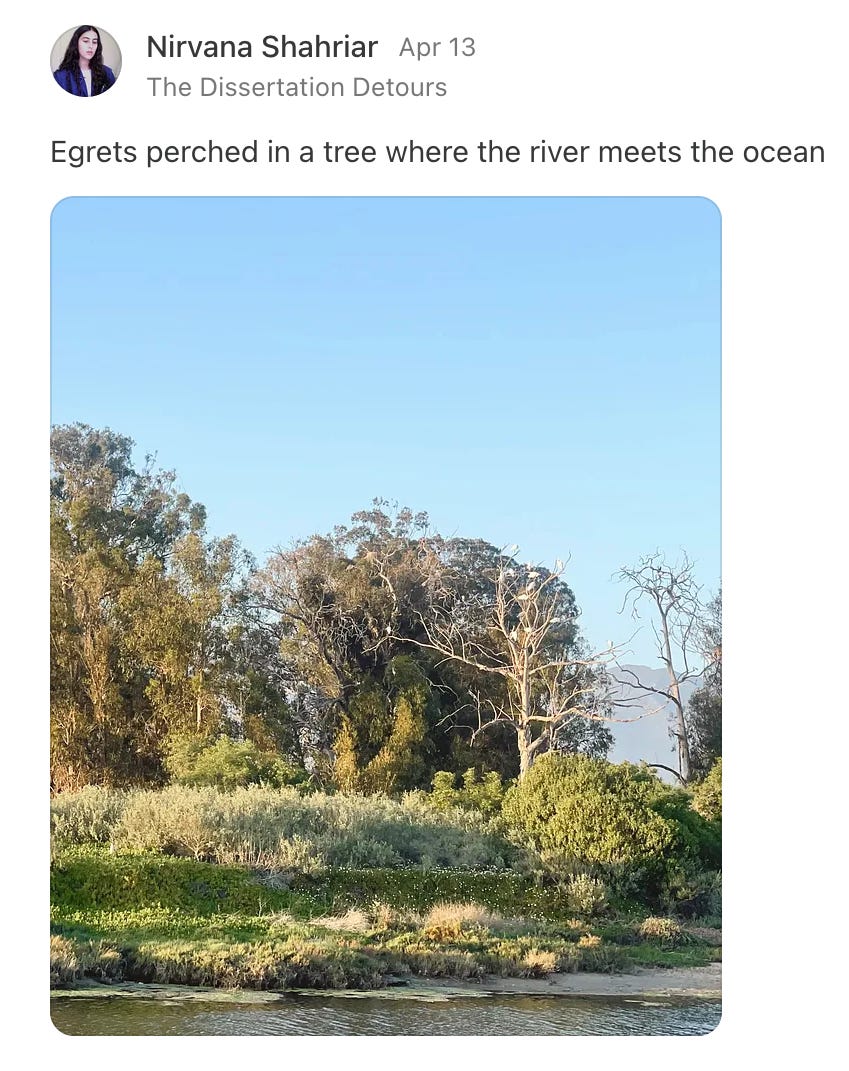
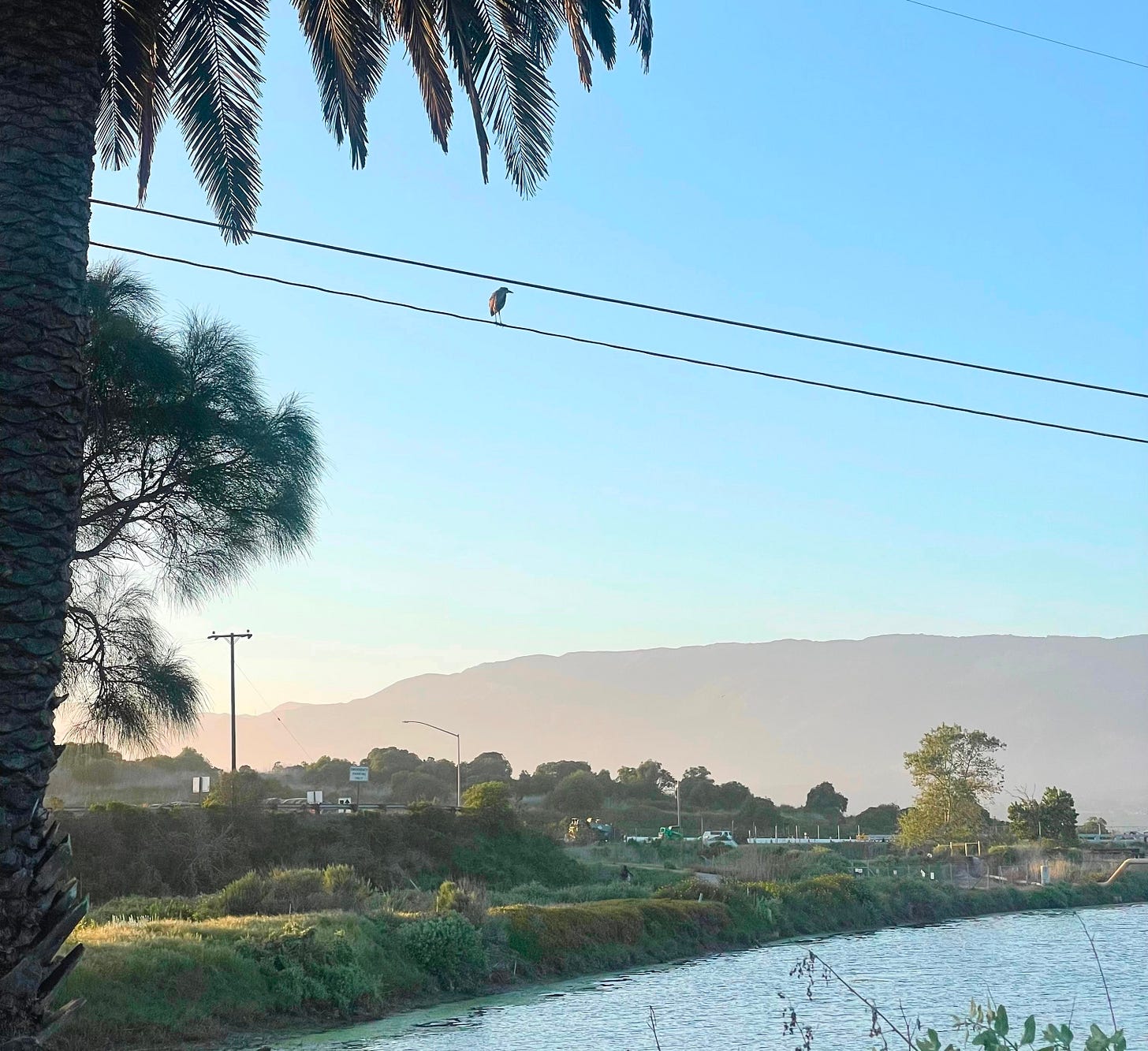
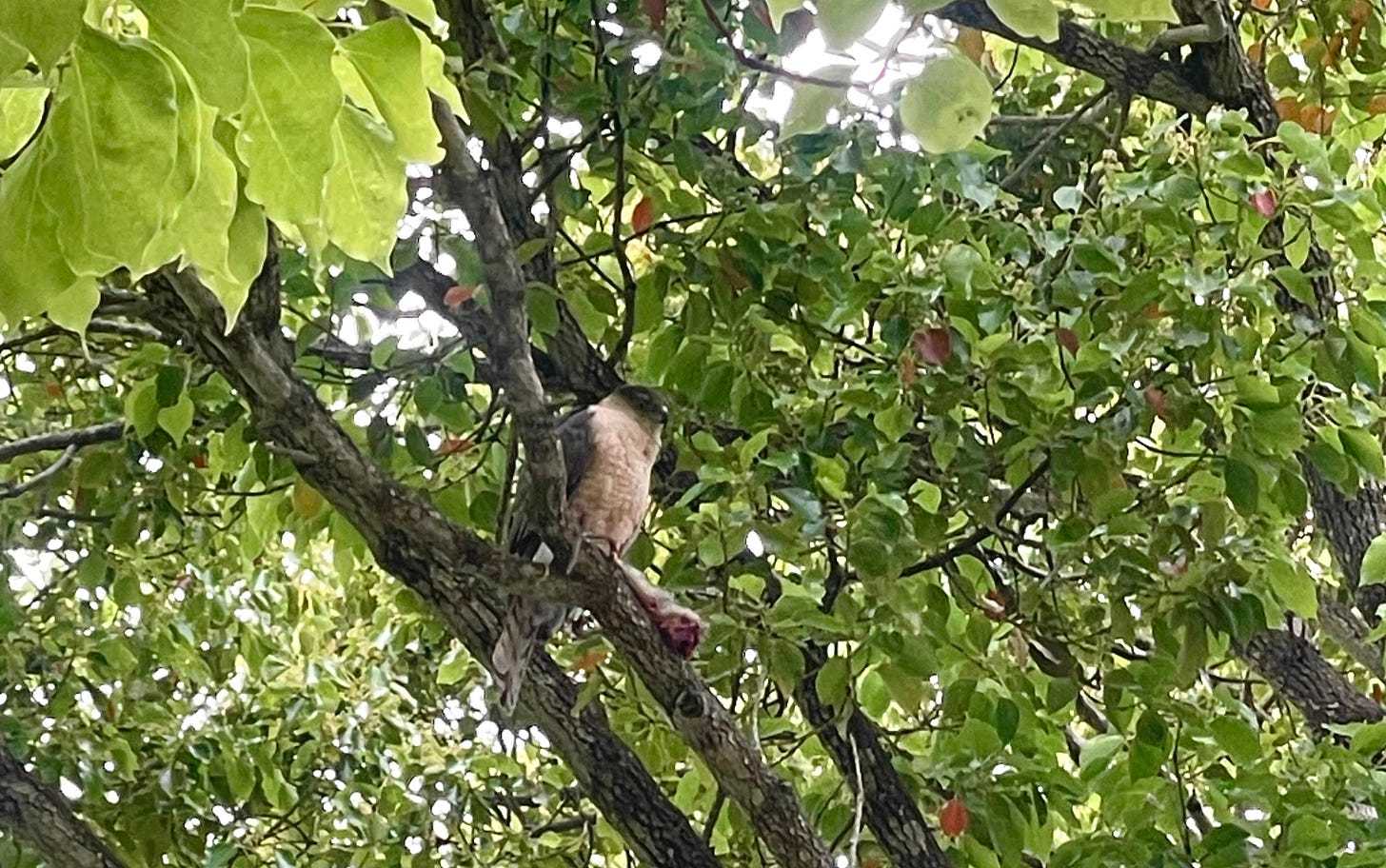
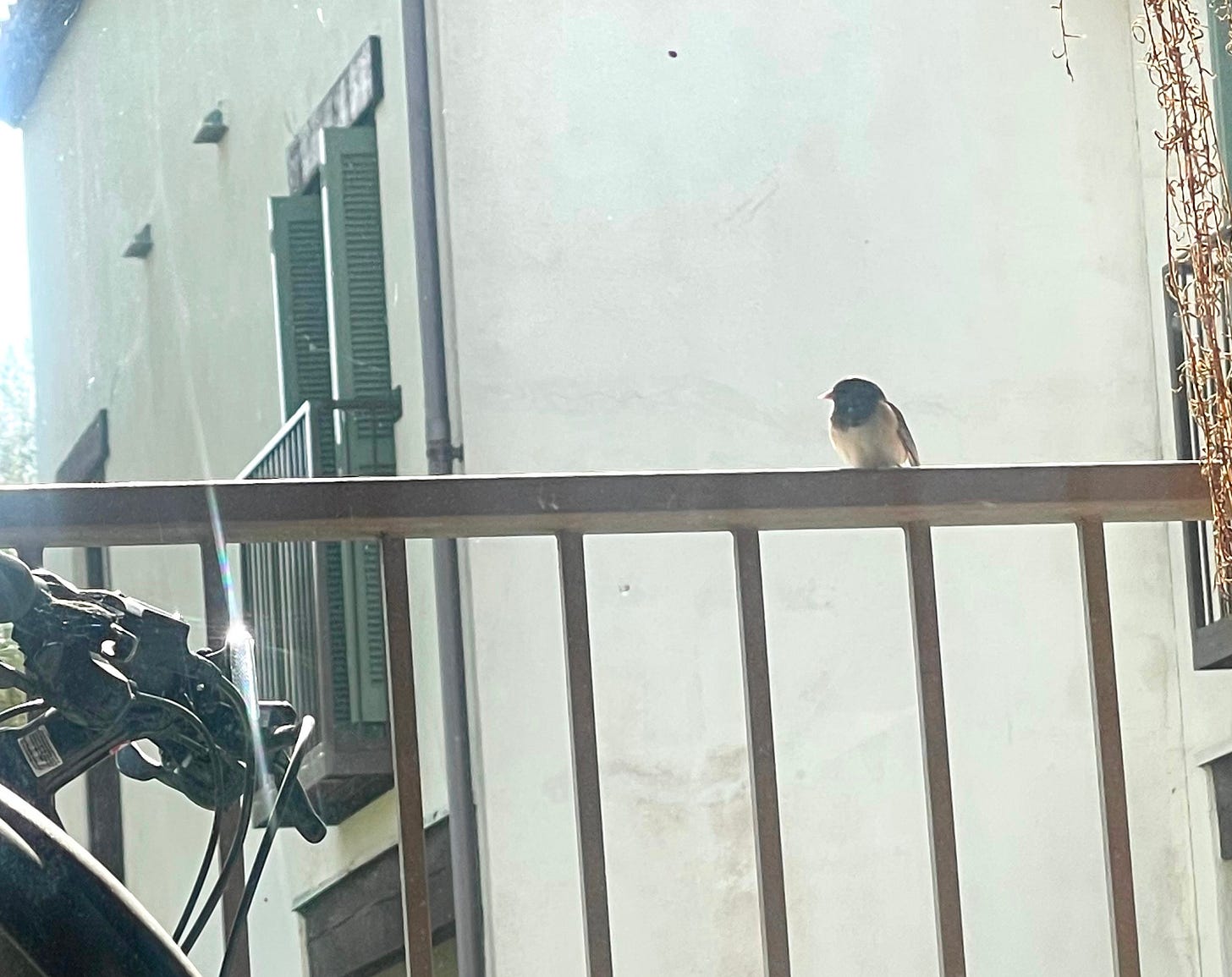
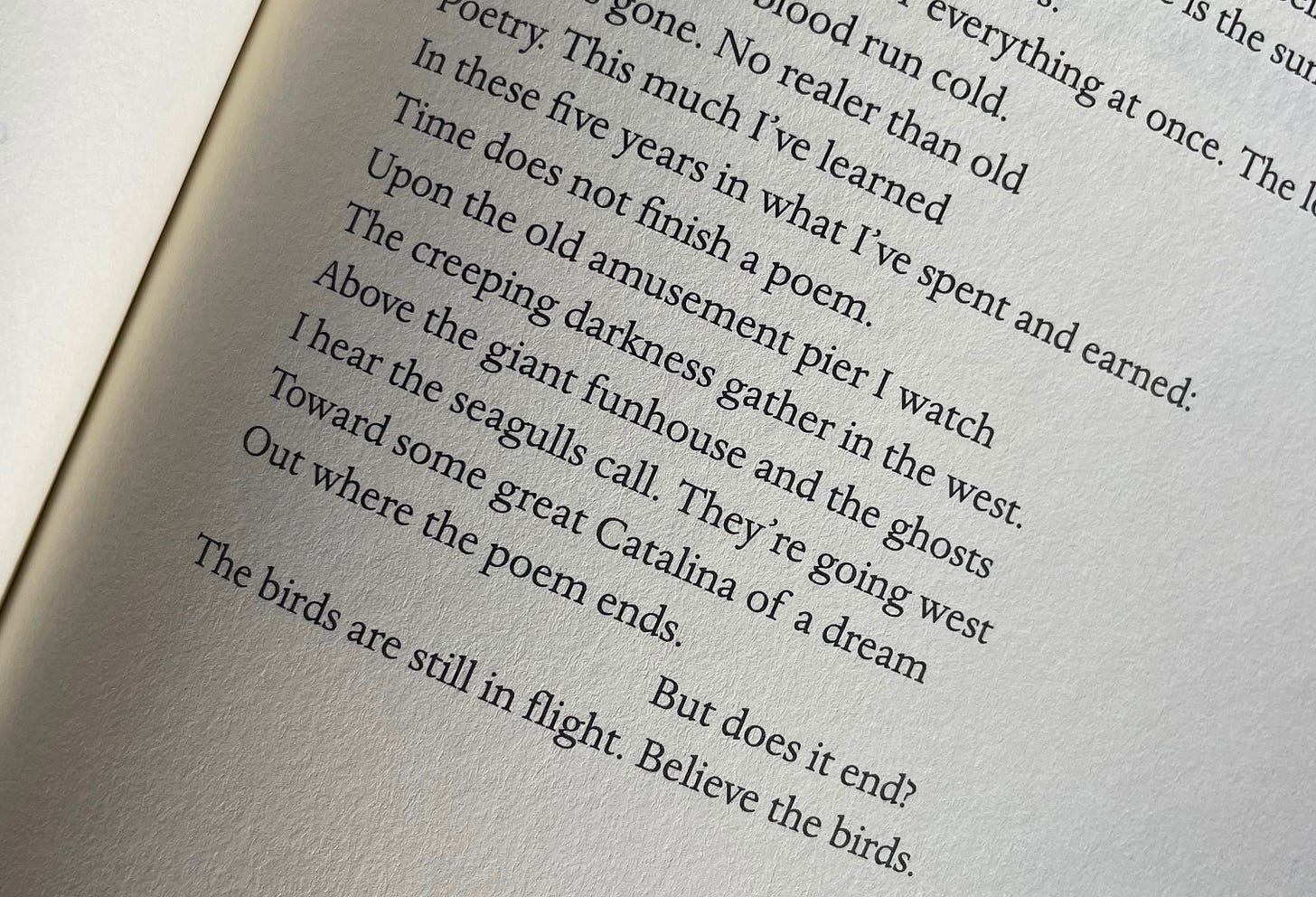
This is interesting. I always check out birds on my walks but it's in a sort of curious and ignorant way.
BEAUTIFUL.
And you answered both my questions. I wanted to know if you're the hawk or the crow... I wanted to know if you use the Merlin app.
Can't wait to read more.